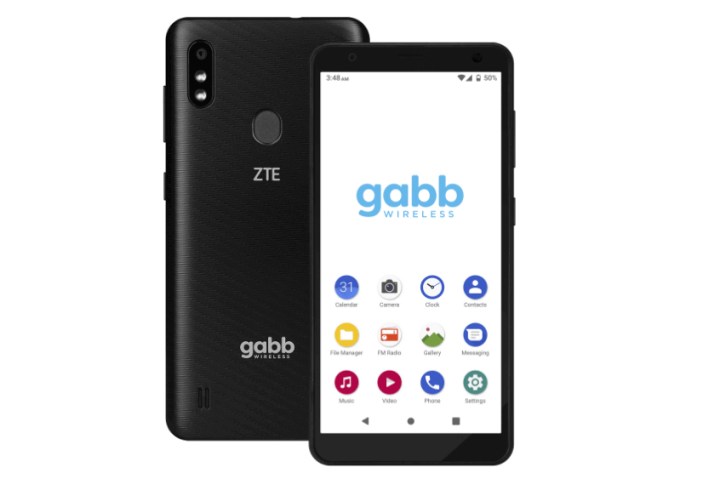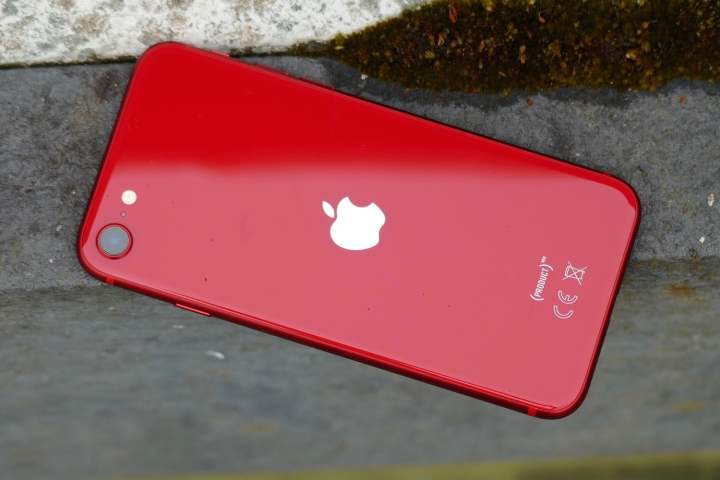It’s hard to say no to your kids when they want something, and these days many kids want a very important and expensive thing: A cell phone. It could be because they want to be like mom and dad, but it’s a good bet that some of their coolest friends already have one. If a cell phone for the kids is a part of your present or near future, rules for its use are likely to be embedded in the family safety regimen — right up there with not talking to strangers and saying no to drugs.
The good part for parents is that a cell phone lets you stay in touch with your kid, approve their contacts, and even track where they are. We offer some pointers on how to choose the right phone for your child, critical features you should look for, ways to control your child’s phone usage, and the best time to take the cell phone plunge for your family.
Further reading
- The best phones for kids in 2021
- The best tablets for kids in 2021
- The best parental control apps for Android and iOS
How to choose a cell phone for your child

Sometimes, the best cell phone for your kid is the one you already own — or used to own before you handed it down. This ensures that both you and your child share an operating system, and that you already know how to use their phone. Or you could simply buy them a smaller, cheaper, or refurbished phone of the same brand as yours, as well as give the kid a treat of a brand new phone. Regardless of how they obtain their handset, if they are under 18, that phone’s cell contract belongs to you.
If you are buying a new handset for a child under the age of 12, choose a cheaper, older model or starter phone that has less retail value and is thus less of a theft magnet. Most vendors offer an entry-level model that allows calls, texting, and some multimedia, which should be plenty for young kids, and not as painful to replace if lost or stolen. Ultimately, the exact smartphone you choose will depend on your child’s age and what your family’s plans are for its use.
What features should you consider when buying a phone for your child?
While there are many considerations and preferences you or your child may dictate on what features are most important — especially whether it will be an iOS, Android, or some third-party vendor-specific operating system, be sure to consider safety features, ease of use, and battery life.
Ease of use: Some cell phones are made especially for children. They’re designed to be easy to use, and have features like limited internet access, phone number privacy, and emergency hot buttons.
Screen size: While smaller phones are better suited for smaller hands, once you get to the preteen and teen years, screen size and camera features will come into play. There’s no single best screen size, but pocketable is preferred so your kid can stroll around town without attracting attention from would-be thieves.
Privacy settings: Your carrier and the phone itself should give you multiple choices for privacy settings and child safety controls.
Web access controls: Most carriers allow parents to turn off features, like web access, texting, or downloading apps and content. Many phones offer web access and mobile apps, but if you’re concerned about your child accessing inappropriate content online, then choose a phone with limited internet access or web filtering features.
GPS: Many mobile phones now have built-in GPS tech and some carriers offer GPS services that let you map your kid’s location.
Battery life: Be sure to check the quality of battery for the phone you plan to buy. It may not need road warrior specs, but it should last all day on a single charge.
What’s the best age to give your child a cell phone?

There is no single best age for cell phone ownership. Some kids seem born clutching a phone in their little paws while others are not ready for the responsibility of a phone until they are teenagers. If a child is old enough to know that the phone is not something to eat and is away from parents during the day, it’s always good to have a device that lets kids stay in touch with you.
While objective observers say that 14 years old — middle school age — is probably the best time to introduce a cell phone to your kid, the age at which kids start clamoring for them seems to begin at around 9 or 10. One study shows that 69% of kids have a smartphone by the time they’re 12 years old. Some guidance regarding how to judge whether your child is mature enough for a phone include good grades, working or volunteering, a clean legal and scholastic record, understanding the concept of limiting time and app downloads, and understanding how to use the phone without disrupting or disturbing others. You are the ultimate judge of whether your child is capable of using a cell phone responsibly.
Can you put parental controls on a cell phone?
Parental controls can be the key to your kid having a phone and not having one. Just as you would not allow your kid to wander the streets alone at night, you want to protect them from online stalkers, harassers, predators, thieves that could threaten their mental health and physical well-being. There are plenty of ways to control how and when your child uses their phone.
Add a line to your existing account: Most parental control features let you halt online bullies by blocking their calls and texts, ensure that your child isn’t exposed to mature content, and check their location. Most carriers let you cap the number of minutes, messages, and entertainment downloads. Restricting the days and times of use can cut costs and keep your child focused on the real world.
Google Family Link: With Google Family Link, parents can supervise and set limits on their kid’s phone use, though its filters are not always totally accurate or appropriate for each child’s age or maturity level. Parental controls let you see what your kids use their phones for, how often, and where they’re located. If your kid is under 13, you can rig up their device with the highest level of supervision. If a kid is over 13, they can disable Google Family Link supervision.
Bark: This subscription service monitors text messages, YouTube, emails, and over 30 social networks for potential safety issues. It allows families to monitor content, manage screen time, and filter websites to help protect their kids online. The service offers screen time management and web filtering tools to help you set limits for how and when kids use their devices.
Apple Screen Time: Built into iOS, Screen Time lets you set limits on how long your kid can use their phone, what apps they can download and use, and when they need to put the phone away for the night. Screen Time also lets you watch and view their apps and screen, track their location, and program in content restrictions.
What is the safest messaging app for kids?

There are plenty of youth-oriented messaging apps — Kik, Snapchat, WhatsApp, and Facebook Messenger — that are not ideal for young kids. Most third-party messaging apps are targeted to the over-13 set because they track users. Unless you use parental controls to limit who your child can exchange texts with, no commercial texting app will be completely safe. The safety is in educating your child on texting best practices. That said, certain message apps are built to be inherently safer for kids, tweens, and teens.
Facebook Messenger Kids: Facebook Messenger Kids hands over almost complete control to parents. You can manually approve all contacts, and set a timer to limit usage. There is no way to hide or delete messages, so you can see exactly what your kid has been up to. There are no ads or in-app purchases, and no need for a Facebook account.
JusTalk Kids: The ad-free JusTalk Kids has numerous parental controls and does not need phone number to work. Passcode protected, your kid cannot receive friend requests from strangers or messages or calls from anyone parents haven’t approved, and it lets you block profiles.
Google Hangouts: Using Google Family Link, you can create an account for a child under the age of 13 and set parental controls, including the manual addition of only friends and relatives. Setting privacy to Can’t Send Me Invitations ensures strangers won’t be able to send friend requests. Individual messages cannot be deleted, though an entire chat history can.
Skype: With Skype, you can set up the service so that only people on your approved contact list can interact with your child. Information like age, date of birth, and gender are hidden from their profile, and your child’s name won’t show up on search results except if their name is an exact match.
Do carriers offer cell phone plans for kids?
Both the major cell phone carriers and assorted MVNOs offer many plans targeted to kids. There are way too many to enumerate all of them here, but the major carrier plans and their features give you some idea of what’s out there.
Verizon: The Just Kids plan, which costs $25 per month, offers unlimited data and talk and text to 20 parent-approved contacts. Plus, Verizon Smart Family Premium lets you implement web app and content filters, internet pause at bedtime or school hours, set contact limits for texting, location tracking, and call for a ride.
Palm: The device offers a data plan for $5 per month or two months free if you provide your own SIM card. It’s also compatible with major providers like AT&T, Verizon, and T-Mobile. Palm and U.S. Mobile offer plans designed for families that want to connect their kid’s Palm.
AT&T: The AT&T Secure Family smartphone app is designed to keep your family safe and connected. Use it to track your kids’ locations in real time, or get arrival and departure alerts, view up to seven days of location history, limit or block internet during specified times, and pause your kids’ Wi-Fi access from your phone.
T-Mobile: The carrier’s Family Allowances plan — now included at no extra charge in every Magenta plan with two or more lines — lets you block or allow calls during four predefined time periods, such as school hours, homework time, dinnertime, or bedtime, choose up to 10 numbers that can always get through to your child, regardless of usage or scheduling limits, block calls and messages from up to 10 phone numbers.
Sprint: You can child-proof your kid’s phone using your My Sprint account. Content filtering is free to all current Sprint customers despite the merger with T-Mobile and only the account owner can control the filter. You can also block text messages, content purchases, restrict voice calls, establish time of day locks, and enact camera restrictions.
The best cell phones for kids
Nokia 3310 3G

While grownups maintain an affection for this simple cell phone, the Nokia 3310 3G is also an outstanding choice for kids under 10 — though with strict content supervision. They can use it for calls, texts, and music. It has a rear 2-megapixel camera (but no selfie camera), Bluetooth, FM radio, a Micro SD card slot, and — that vanishing species — a headphone jack. The Nokia connects to the internet, though parents can disable access by adjusting the data settings. Its solid body with a tactile matte finish is easy to grip even for small hands and easily slips into a pocket. It also has a long-lasting battery. Best of all, everyone can enjoy the legendary Snake game. With 3G connectivity, you’ll stay connected to news, blogs, and even Facebook and Twitter.
Gabb Z2

The Gabb Z2 is a kids’ phone that masquerades as a smartphone, and it’s great for younger kids because it has some built-in safety features as well as being cheaper than most phones. It has a front and rear-facing camera, fingerprint lock, and some preinstalled, kid-oriented apps. There’s no dangerous stuff like social media, games, image and group texting, or internet browsing. Gabb does not feature specific parental controls, which allows kids unlimited talk and text time on a $10 monthly plan to make their own decisions about how often they use their phone. Middle schoolers and older elementary school kids around 8-12 will enjoy having a good-looking phone and a way to talk to their friends. Parents rely on this phone’s built-in limits while at the same time appreciate the ability to trust their kids with more choices and options.
VTech KidiBuzz

Designed for kids four years old and up, this kiddie smartphone is not a cell phone, but is fashioned to look similar to mom and dad’s, complete with a shatter-proof screen. Kids can connect via Wi-Fi to send images, texts, and voice messages to parent-approved contacts with the free KidiConnect app and take photos with Wonder Masks’ face filters that follow kids’ movements. It comes packed with more than 40 learning games with even more available from the third-party app store.
KidsConnect KC2

This is the phone you want for your under-12 youngster. You can always get in touch with your kid and know exactly where they have been via the phone’s location history feature, though the built-in GPS, Wi-Fi, and LBS tracking is approximate. The KidsConnect Phone has three speed-dial buttons and a 15-number phone book, which are the only numbers the kids can exchange calls or texts with. An activated SOS feature sends text messages with location to up to three cell phone numbers and will autodial the numbers on the SOS list. A geofencing feature lets you set a predetermined area and receive an alert if the phone enters or leaves the area. The voice monitoring feature lets you send a text message to the phone and the phone calls back without activating the screen so you can monitor the child’s surroundings. You must choose and activate a service plan for the phone.
Amazon
Apple iPhone SE 2020

If your kid is 12 or over, an Apple iPhone SE 2020 is a perfect first smartphone. It fits in smaller hands and is less expensive than all other Apple phones, including the iPhone 12 Mini, another great choice if your kid is extremely careful and responsible. Among its best features are Apple’s A13 Bionic chip with Neural Engine, 5G support, and MagSafe compatibility. With either phone, you can use Apple’s Screen Time to monitor your kid’s use. With a 4.7-inch screen, it’s pretty small, but has a high-quality camera and ample storage — the 12MB camera takes clear shots while the 32GB storage is enough for your kids’ apps, photos and videos, and browsing data.
Alcatel Go Flip 3

If your youngster is hankering for a flip phone — which are compact and popular with the younger set — consider the Alcatel Go Flip 3. Great for both kids and parents, it’s got plenty of screen space at 2.8 inches for reading emails, text messages, and phone numbers, plus a 1.44-inch external display that lets your kid see that it’s you calling without having to crack open the phone. The handset comes with Google Assistant and large keys, Real-Time-Text (RTT), Text Telephone (TTY), and hearing aid compatibility. Powered by a quad-core processor, memory up to 32GB, and a battery that supports up to 7.9 hours of talk time in a single charge, you get clear call quality as well as Wi-Fi Calling. Its fast, 4G LTE speeds let you share your mobile data with up to eight devices via mobile hot spot.



